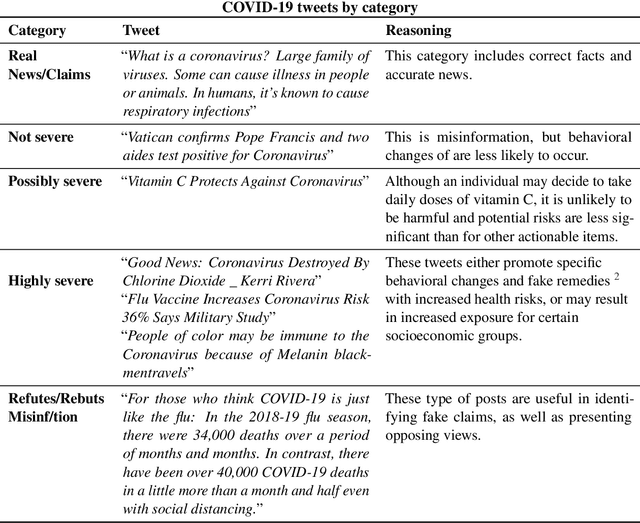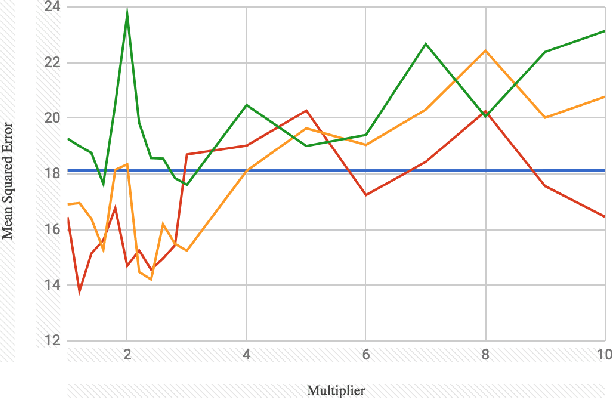Alex Morales
Drink bleach or do what now? Covid-HeRA: A dataset for risk-informed health decision making in the presence of COVID19 misinformation
Oct 17, 2020



Abstract:Given the wide spread of inaccurate medical advice related to the 2019 coronavirus pandemic (COVID-19), such as fake remedies, treatments and prevention suggestions, misinformation detection has emerged as an open problem of high importance and interest for the NLP community. To combat potential harm of COVID19-related misinformation, we release Covid-HeRA, a dataset for health risk assessment of COVID-19-related social media posts. More specifically, we study the severity of each misinformation story, i.e., how harmful a message believed by the audience can be and what type of signals can be used to discover high malicious fake news and detect refuted claims. We present a detailed analysis, evaluate several simple and advanced classification models, and conclude with our experimental analysis that presents open challenges and future directions.
Multi-dimensional Features for Prediction with Tweets
Oct 15, 2019
Abstract:With the rise of opioid abuse in the US, there has been a growth of overlapping hotspots for overdose-related and HIV-related deaths in Springfield, Boston, Fall River, New Bedford, and parts of Cape Cod. With a large part of population, including rural communities, active on social media, it is crucial that we leverage the predictive power of social media as a preventive measure. We explore the predictive power of micro-blogging social media website Twitter with respect to HIV new diagnosis rates per county. While trending work in Twitter NLP has focused on primarily text-based features, we show that multi-dimensional feature construction can significantly improve the predictive power of topic features alone with respect STI's (sexually transmitted infections). By multi-dimensional features, we mean leveraging not only the topical features (text) of a corpus, but also location-based information (counties) about the tweets in feature-construction. We develop novel text-location-based smoothing features to predict new diagnoses of HIV.
 Add to Chrome
Add to Chrome Add to Firefox
Add to Firefox Add to Edge
Add to Edge